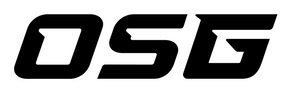So why would you want to change to DBW? In this post we'll explore the positive and negative aspects of DBW as well as dispel some common myths regarding electronic throttle control.
Here's a list of the benefits of DBW:
- "Point and Shoot" idle control. Literally you can program what you want your idle speed to be and the throttle will work automatically to maintain that idle speed.
- Eliminates the need for aging, dirty idle air control valves that can be a costly to replace and a nightmare to tune properly.
- Eliminates air leaks and "throttle sticking" that can be found in cable driven throttle body applications. Having the shaft seals leak and cause boost issues is never fun, neither is having a throttle cable seize in the open position!
- Improve throttle response via programmable ramp rates vs throttle size.
- Cruise control - yep, on a manual transmission - pretty cool for highway use.
- Automatic throttle blips on downshifts.
What about the negatives?
- The main negative to DBW is that it can not be used in conjunction with the stock ECU. It requires a modern programmable ECU that supports DBW. This is probably the largest setback, but honestly, it's also one of the largest, most worthwhile upgrades on it's own
What are those Myths about Drive by Wire?
Myth: DBW is slower than a cable actuated throttle
FALSE! This is the most common myth about DBW. Most people familiar with DBW have it installed from the factory on their modern daily driver. They've probably experienced a "lag" or delay in the throttle response compared to that of a older cable driven throttle. This has absolutely nothing to do with the electronic throttle body, but how it is being controlled by the vehicle's ECU. The manufacturer of the vehicle has taken advantage of the programable aspect of DBW to make the vehicle safer and more fuel efficient by slowing throttle response and the ramp rate between the pedal and throttle. In a performance scenario, DBW systems can be programmed to be just as fast, if not faster, than their cable driven counterparts.
Myth: DBW is not safe
FALSE! DBW has been overwhelmingly adopted by almost every modern vehicle manufacturer in the world. This alone should prove that it has been found to be very safe. Why is this exactly? DBW systems have evolved to have electronic redundancies built into their operation (throttle and pedal) so that is one set of signals fails, there is a way to check and backup the signal with the redundant signal. Once could make the argument that cable driven systems could actually be less safe considering they are subject to contamination inside the cable housing and "sticking" due to the exterior mechanical nature of the throttle actuation.
In summary, DBW is a incredible upgrade that costs $$ like any other upgrade. The benefits are amazing and it can help modernize an aging car and help overcome some of the technological shortcomings of a 30+ year old engine management system. Contact us today if you'd like to talk about making the change to DBW. We offer a wide array of adapters for different manifolds as well as full harnesses which make installation a breeze.
https://outsidergarage.com/collections/drive-by-wire/Drive-By-Wire-(DBW)



I have a irs intake manifold with a 76 mm throttle body for my sr20det blacktop. Do I need a adapter for the 76 mm Bosch throttle body? I